Earth Day is an annual event on April 22 to demonstrate support for environmental protection. Earth Day STEM activity is an educational and engaging project focusing on environmental awareness and sustainability. These activities inspire students and learners to explore, understand, and appreciate the importance of caring for the earth.
Earth Day STEM Activity to Inspire Kids to Care for Our World
Try these fun Earth Day STEM activities for students to teach kids how to care for the world with active, hands-on projects. It’s important to show elementary kids why it is cared for in our world and create solutions to the problems humans have created; humanity and nature must find a way to co-exist without causing more damage that will end up harming all living things. Climate change is real, and it is up to us to help recover some of the damage done to the world over the past several hundred years since the Industrial Revolution.
Earth Day is a great time to get our students excited about getting creative and connected with nature. That doesn’t mean you must give up technology or STEM activities. These Earth Day stem activities help teach kids about recycling, biomes, carbon footprints, water filtration, pollution, and even global warming. We must teach our kids about protecting the environment and that they can contribute, even at a young age.
1. Recycling Challenge
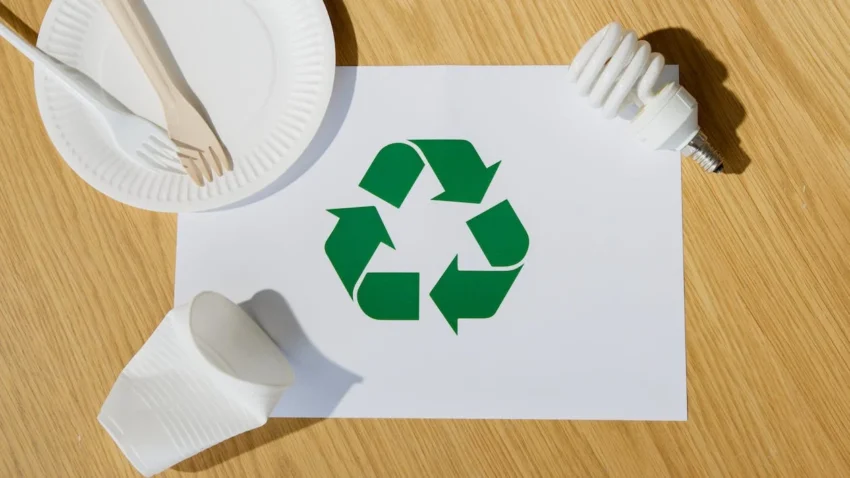
The Recycling Challenge STEM activity encourages students to think critically about waste management, resource conversation, and recycling solutions. This hands-on project involves students in the entire process, from researching to understanding the environmental impact.
The Recycling Challenge STEM activity is a hands-on, attractive plan that promotes analytical inquiry and fosters a sense of environmental management. Here are some key components of the recycling challenge STEM Activity.
- Research and Exploration: Students begin by researching the environmental impact of different types of waste, such as plastic, paper, and electronic waste. They explore current recycling methods and technologies to understand their effectiveness.
- Problem Identification: Students identify specific challenges and issues related to recycling in their community or school. This step encourages critical thinking and problem-solving skills as students analyze the root causes of recycling inefficiencies.
- Idea for use in the classroom: Ask the students to collect several pieces of plastic trash from home, the school cafeteria, or the classroom. Each student makes a four-column data table listing the item to predict the ease of recycling and actual ease of recycling. They should fill in the first two columns, introduce students’ infographics, and ask them to fill in the last column.
2. Earth Day STEM Activities about Pollution
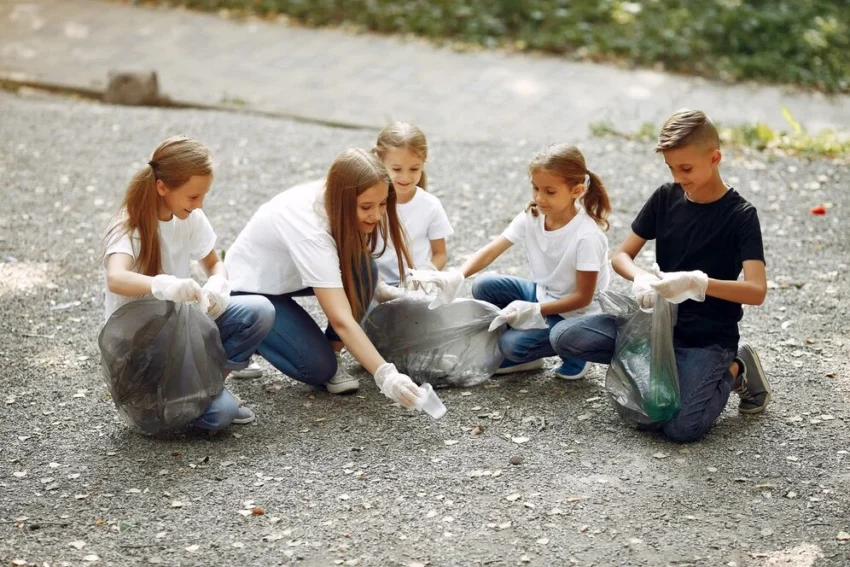
STEM (Science, Technology, Engineering, and Mathematics) activities focused on Earth Day and pollution. This activity is designed to help students understand the impact of pollution and explore potential solutions.
- Clean-up challenge: To raise awareness about pollution and engage students in a hands-on activity to explore solutions for reducing pollution.
- Material Needed:
- Small plastic containers (representing bodies of water)
- Different types of pollutants (small pieces of paper, plastic beads, etc.)
- Water
- Filtration materials (cotton balls, sand, gravel)
- Strainers or filters
- Journals or worksheets for recording observations
- Markers and poster paper
- Explanation: Begin with a discussion about pollution, its types (air, water, soil), and its environmental impact. Discuss how pollutants affect ecosystems and wildlife. Emphasize the importance of finding solutions to reduce pollution. Provide each student/group with a small plastic container filled with water, representing a body of water. Introduce pollutants (small pieces of paper, plastic beads, etc.) and ask students to add this pollutant to their “water bodies.”
- Filtration challenge: Explain the concept of water filtration and its role in reducing pollution. Provide students with filtration materials such as cotton balls, sand, and gravel.
- Testing: Have students test their filtration systems by pouring the polluted water through them. Ask them to observe and record the effectiveness of their filtration systems. Discuss the results as a class and encourage students to think about them.
- Result: Have students reflect on what they learn from the activity. Ask them to consider the challenges of pollution and the importance of finding solutions. Conclude the activities with the class discussion about the importance of addressing and how STEM solutions can contribute to a cleaner environment.
3. Easy Earth Day Spring Activities
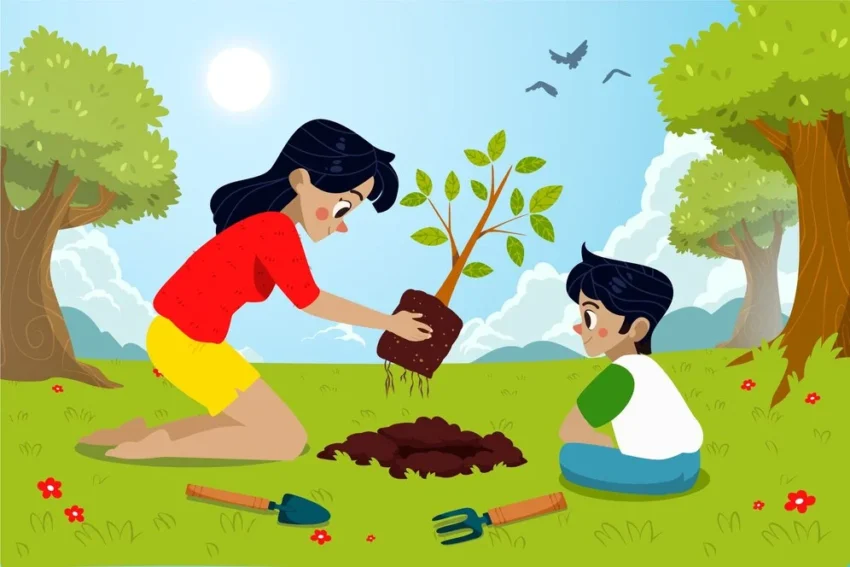
Springtime is perfect for kids to explore spring STEM activities and plant science experiments. Whether you are interested in the weather, plants grow, the bugs around you, or the spectrum of colors in a rainbow.
Kids can keep general to observe many different things within the spring season.
- Measure and track plant growth and annual flowers that are starting to regrow.
- Track and chart the weather and graph sunny days versus windy days versus rainy days.
- Start a collection of rocks and learn how to be a collector.
- Dig up a soil-filled bin and examine it with a magnifying glass.
- Collect a water sample from a nearby pond and use a magnifying glass to see what you can see.
- Gather leaves and other natural materials and create a collage, or trace them around them in a sketch pad! You can even cut a leaf in half, glue it down, and draw in the other half for practice in symmetry.
4. Summer Activity
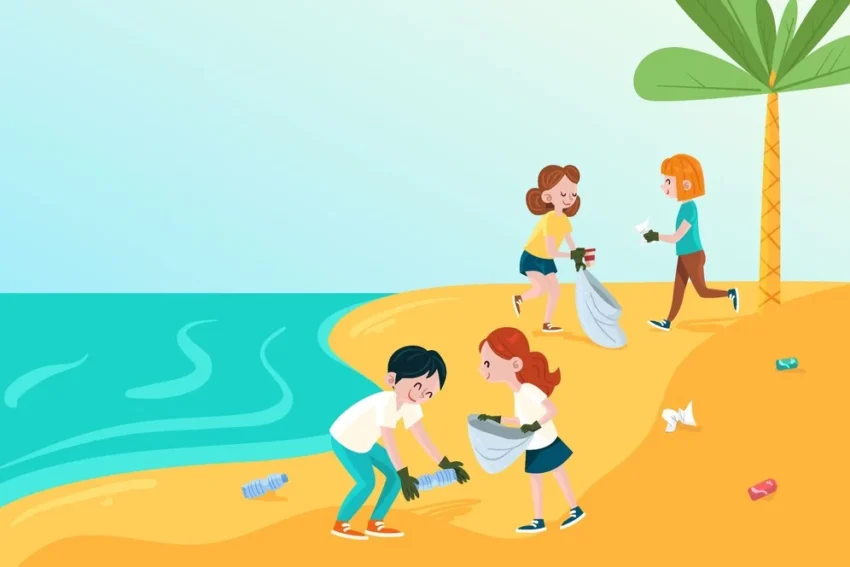
Summer is a great time for kids to branch out and learn about something new that interests them. STEM learning activities incorporate real-world applications through hands-on activity. Often, STEM activities cross-discipline and combine two or more topics. We like to kick things up a notch with summer science experiments during summer.
That is why science experiments have become such a big part of our summer. Each summer, we spend several weeks trying new science experiments for the holiday and STEM activities that are educational and fun. All of these science experiments for summer include fun summer themes, like bright colors, kitchen science, ice, tie dye, space, the ocean, and more.
5. Homemade Crayons
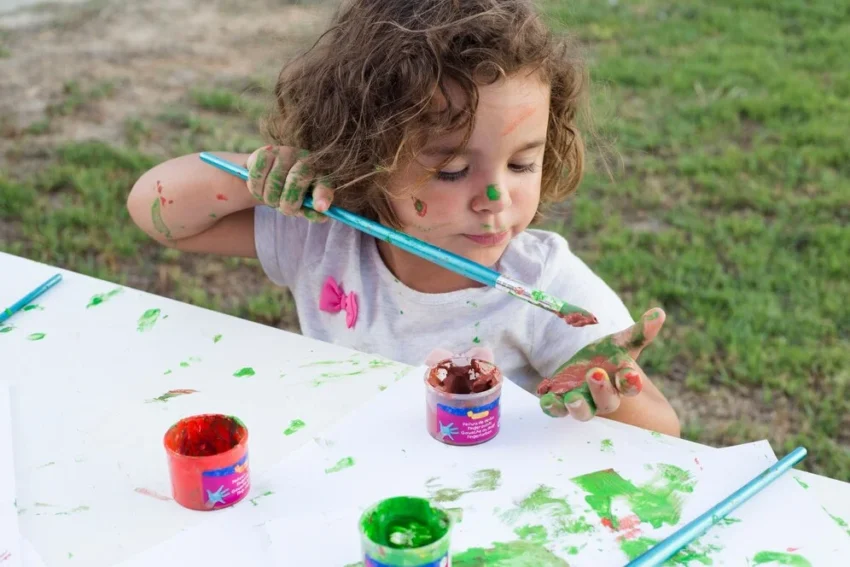
Making your crayons can be exciting and teach children the importance of using readily available materials in the environment that are thrown away. Most lessons there are not really for making crayons but more for reusing old ones.
First, you take different colors of old crayons and remove the wrappers. You then break a crayon into small pieces and put the unwrapped, broken crayon pieces into silicone models. Making rainbow crayons using different colors in the same model is easy.
Benefits of Earth Day STEM Activity
Earth Day activities can benefit individuals, communities, and the planet. Earth Day, celebrated annually on April 22nd, is a global event promoting environmental awareness and encouraging actions to protect the Earth. Here are some benefits of engaging in Earth Day activities:
- Environmental Awareness: Earth Day activities raise awareness about environmental issues, such as climate change, pollution, deforestation, and biodiversity loss. Further awareness can lead to a better understanding of our planet’s challenges.
- Community Engagement: Earth Day often involves community events, cleanups, and tree-planting initiatives. Participating in these activities fosters community and encourages people to work together for a common cause.
- Environmental Education: Earth Day activities often include educational programs, workshops, and seminars. These opportunities help educate people about sustainable practices, conservation efforts, and the significance of protecting natural resources.
- Inspiration for Change: Earth Day activities inspire people to make positive changes in their daily lives. Whether it’s reducing single-use plastic, adopting supportable transportation options, or supporting local environmental initiatives, specifically motivated to contribute to a better planet.
Conclusion
Concluding a STEM (Science, Technology, Engineering, and Mathematics) activity for Earth Day involves summarizing the key findings, discussing the significance of the activities, and reflecting on the broader implications for environmental awareness and conservation.






